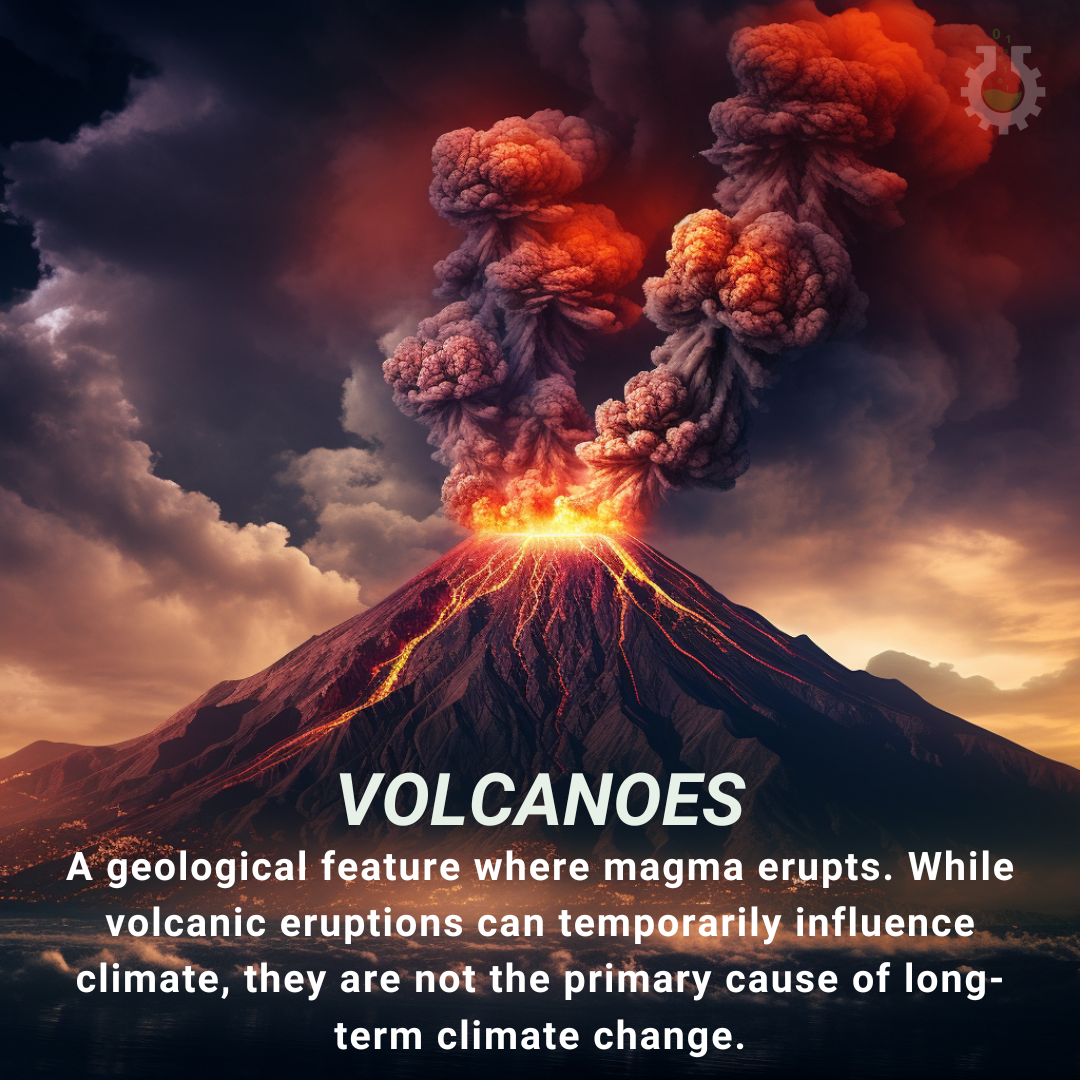November 21, 2023
Climate Change Poster Collection of the Day – Volcanoes
Book a Demo
Today’s Climate Change Poster Collection highlights Volcanoes, the natural world’s giants, with their eruptions considered as some of the most majestic, yet terrifying, events in nature. During volcanic eruptions, carbon dioxide (CO2) and other gases are discharged into the atmosphere. These gases, particularly CO2, have the potential to contribute to climate change, a global issue that is currently at the forefront of scientific research and political action.
However, it’s interesting to note that the carbon emissions caused by human activities, such as the burning of fossil fuels, are over 100 times greater than those released by all the world’s volcanoes combined. This is a sobering fact that highlights the significant impact human activity is having on our planet’s climate.
There are, however, exceptions to this rule. Super volcanoes, such as Yellowstone or Mount Toba, are capable of releasing CO2 volumes equivalent to those emissions produced by human activities over an entire year. These rare, major eruptions are significant events that can have global implications.
Climate scientists have often used volcanic eruptions to explain periods of global cooling. This is because the gases and particles released during eruptions can temporarily obstruct sunlight, reducing the amount of heat reaching the Earth’s surface. Conversely, the warming caused by greenhouse gases from human activities is enduring and can last for thousands of years.
Although volcanoes are significant agents of geologic change and can significantly influence Earth’s climate, the most common gas they release, water vapor, has little impact due to its quick dispersion from the atmosphere. Sulfur dioxide (SO2), another gas commonly released by volcanoes, can cool the atmosphere. This is because large eruptions can propel SO2 into the upper atmosphere where it absorbs radiation from the sun.
Despite our understanding of volcanic-induced cooling, there is still much to learn. Scientists still need to investigate many aspects, such as the specific characteristics of eruptions that impact the climate, how to predict which volcanoes are likely to affect the climate, and the potential climate effect if a series of large eruptions occur over a decade. As we strive to understand our changing climate and find ways to mitigate its impacts, it’s clear that volcanoes will continue to play a key role in these investigations.
Discover an inspiring collection of climate change poster.



